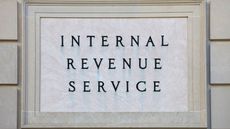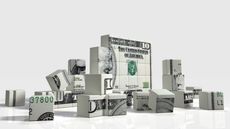Investing Like Buffett and Graham
The managers of Oak Value aim to achieve excellence by following the examples of Warren Buffett and Benjamin Graham.
Many investors claim to emulate the investing techniques of Warren Buffett and Benjamin Graham, the father of security analysis. But few do it as thoroughly as the team that runs Oak Value, a small, no-load fund run by a small company based in Durham, N.C. "Investing in good businesses, with good management, purchased at attractive prices," reads the fund's motto, posted at www.oakvaluefund.com.
The marks of Buffett and Graham are all over Oak Value Capital Management. The fund's quarterly shareholder letters contain numerous Buffettisms. And Larry Coats, one of the fund's managers, sprinkles his description of its strategy with Buffett and Graham references (other members of the investing team include Christy Phillips and David Carr Jr., the firm's co-founder; the other co-founder, George Brumley III, died in a 2003 plane crash).
And, guess what. Buffett's Berkshire Hathaway occupies the top spot in Oak Value's 24-stock portfolio, accounting for nearly 10% of assets. In fact, Berkshire has been one of the fund's tenants since its 1993 inception. Over the years, its weighting in the fund (symbol OAKVX) has varied from 1.5% to nearly 12%. "Right now, we believe Berkshire warrants a 10% holding," says Coats. "But it's not a museum piece. There is a price at which we would reallocate capital." (Translation: he'd sell the stock if it got too pricey.)

Sign up for Kiplinger’s Free E-Newsletters
Profit and prosper with the best of expert advice on investing, taxes, retirement, personal finance and more - straight to your e-mail.
Profit and prosper with the best of expert advice - straight to your e-mail.
Oak Value holds both classic value stocks, including insurers, and growthier fare, such as eBay and Microsoft, a recent addition. Like Buffett, the managers are buy-and-hold investors who gravitate toward understandable businesses with sustainable cash flows and strong management teams. The fund's turnover is 30%, meaning that on average it holds stocks for a bit more than three years.
From its inception through April 24, the fund returned an annualized 12%, an average of one percentage point more than the Standard & Poor's 500-stock index. It held up relatively well during the 2000-02 bear market, during which it surrendered 19%, far less than the 35% drop experienced by the average U.S. stock fund (and the S&P 500's 47% loss).
Oak Value has also had some lean years. In 2005, for example, it lost 1%, trailing the index by six percentage points. And its 8% gain in 2004 lagged the index by three points. Coats says the fund's lackluster showing during this stretch resulted largely because it avoided energy stocks, whose performances, he says, are too closely tied to the price of oil and gas.
But over the past year through April 24, the fund gained 19%, four percentage points more than the S&P 500. "Quality has begun to matter again," says Coats. "Part of our performance lately can be attributed to the fact that the market is more aligned with what we do."
Also boosting performance, Coats says, was an overhaul of the fund's research department several years ago. Previously, he says, the team of analysts was more like a craft guild. "They were good analysts in their own right but didn't have the effectiveness and productivity of a team," he says. The department's reconfiguration included several analyst changes, as well as the creation of a research database. "It's easy as value managers to become complacent with the companies we own," Coats says. "We realized that we should be learning more and more about a lot of businesses every day, and there should be more competition for the capital in the portfolio."
The fund, which contains $148 million in assets, requires an initial minimum investment of $2,500. It charges 1.29% a year for expenses.
-
-
 IRS is Targeting Promoters of Abusive Tax Schemes Kiplinger Tax Letter
IRS is Targeting Promoters of Abusive Tax Schemes Kiplinger Tax LetterTax Letter Tax schemes range from basic tax dodges to highly complex transactions.
By Joy Taylor • Published
-
 How to Save on Prescription Medication
How to Save on Prescription MedicationHow you can save money on prescription medication amidst rising prices.
By Erin Bendig • Published
-
 The 5 Best Actively Managed Fidelity Funds to Buy Now
The 5 Best Actively Managed Fidelity Funds to Buy Nowmutual funds In a stock picker's market, it's sometimes best to leave the driving to the pros. These Fidelity funds provide investors solid active management at low costs.
By Kent Thune • Last updated
-
 The 12 Best Bear Market ETFs to Buy Now
The 12 Best Bear Market ETFs to Buy NowETFs Investors who are fearful about the more uncertainty in the new year can find plenty of protection among these bear market ETFs.
By Kyle Woodley • Published
-
 Don't Give Up on the Eurozone
Don't Give Up on the Eurozonemutual funds As Europe’s economy (and stock markets) wobble, Janus Henderson European Focus Fund (HFETX) keeps its footing with a focus on large Europe-based multinationals.
By Rivan V. Stinson • Published
-
 10 Bond Funds to Buy Now
10 Bond Funds to Buy NowInvesting for Income Bond funds have seen sizable losses so far this year, but yields are now rising to attractive levels for income-starved investors.
By Adam Shell • Published
-
 Vanguard Global ESG Select Stock Profits from ESG Leaders
Vanguard Global ESG Select Stock Profits from ESG Leadersmutual funds Vanguard Global ESG Select Stock (VEIGX) favors firms with high standards for their businesses.
By Rivan V. Stinson • Published
-
 Kip ETF 20: What's In, What's Out and Why
Kip ETF 20: What's In, What's Out and WhyKip ETF 20 The broad market has taken a major hit so far in 2022, sparking some tactical changes to Kiplinger's lineup of the best low-cost ETFs.
By Nellie S. Huang • Published
-
 ETFs Are Now Mainstream. Here's Why They're So Appealing.
ETFs Are Now Mainstream. Here's Why They're So Appealing.Investing for Income ETFs offer investors broad diversification to their portfolios and at low costs to boot.
By Nellie S. Huang • Published
-
 Do You Have Gun Stocks in Your Funds?
Do You Have Gun Stocks in Your Funds?ESG Investors looking to make changes amid gun violence can easily divest from gun stocks ... though it's trickier if they own them through funds.
By Ellen Kennedy • Published









